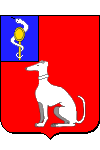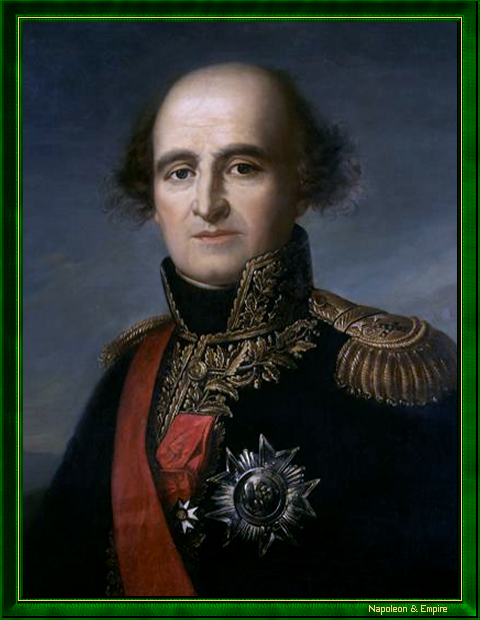Count of the Empire
Pronunciation:

Born in Laon, Picardy, on December 8, 1742, Jean-Mathieu Philibert Sérurier took part in the Seven Years' War (he was a lieutenant as early as 1755, at the age of thirteen), but was still only a colonel in 1792, after having waited more than twenty years to be promoted to captain.
Suspected for a time of royalism, and perhaps tempted to emigrate, he was deposed, arrested, released through the intervention of Paul-François de Barras and finally appointed brigadier general in June 1793, then division general in December 1794, still with the Army of Italy.
Sérurier was a rigorous disciplinarian - which on several occasions brought him into conflict with soldiers unaccustomed to such high standards - and he never hesitated to share the hardships of his troops, or to make personal sacrifices. Placed at the head of the army's right wing, he took part in the successes of Lonato (November 23, 1795), Mondovi (April 21, 1796) and La Favorita (January 16, 1797), and received the capitulation of Mantua on the following February 2.
After bringing the flags taken from the enemy during the last campaign to the Directoire, which Napoleon Bonaparte accompanied with a letter praising his messenger, Sérurier was given the task of preparing the evacuation of Venice. In the mind of the general-in-chief, this involved stripping the city, which had come under Austrian domination as a result of the Treaty of Campo-Formio, of all its precious and useful assets. Sérurier carried out this mission with no qualms, taking with him the curses of the population (January 18, 11798798).
Although appreciated by Napoleon Bonaparte for his devotion and integrity, he was not included in the Egyptian expedition, having been judged too old.
He therefore continued to serve in Italy. First in Lucca, where he presided over the establishment of a sister republic (December 1798-January 1799), while raising the city's war dues.
Hostilities resumed, and he distinguished himself at Pastrengo on March 26, 1799, but his division became disorganized after a long and difficult retreat necessitated by its numerical inferiority - some officers were murdered by the troops - and he was forced to capitulate at Verderio on April 28.
Alexander Suvorov allowed him to return to France on his word of honor not to serve against Russia or Austria until the end of the war. Sérurier, a particularly honest officer, scrupulously respected his oath.
Left without a job by the Directoire, he joined the conspiracy that led to the 18 Brumaire, but played only a passive role on the day of the coup d'état.
Appointed senator in December 1799, he became governor of the Invalides in 1803, received the title of marshal in 1804, and count in 1808. Napoleon 1st considered giving him the title of Duke of Mondovi, but gave up for an unknown reason.
On the night of March 30 to 31, 1814, having learned of the capitulation of Paris, Sérurier had the 1,417 flags entrusted to his guard burned and their staffs thrown into the Seine, along with Frederick II's sword and decorations, kept at Les Invalides since 1806.
Having rallied to Napoleon I during the Hundred Days, he lost his governorship, his peerage (although he did vote for Marshal Ney's death) and his marshal rank on Louis XVIII's return.
He was not restored to his full rights until January 1, 1819, but succumbed on December 21 to a "paralysis of the brain" secondary to the gout from which he had been suffering for many years.
"Marshal Sérurier". 19th century French school.

Sérurier's name is inscribed on the 24th column (south pillar) of the Arc de Triomphe de l'Étoile .
His tomb is in Paris, in the Père Lachaise cemetery, division 39. However, his body was transferred to Les Invalides on February 26, 1847, where it rests in the crypt of the governors of Saint-Louis cathedral.
The nickname "Virgin of Italy", sometimes attributed to him and supposed to celebrate his integrity, is not fully attested.
Detailed military career
established by Mr. Eric Le Maître, put online with his kind permission.Combat wounds
By a gunshot which broke his jaw at Warbourg, on July 31, 1760.Captivity
Captured on April 28, 1799 during the Battle of Verderio against the Austro-Russians, he was freed by Suvarov on the promise never to take up arms again against either nation.First engagement
As lieutenant in the Laon militia battalion, Eustache de Vaucleroy company, on March 25, 1755.Career development
Lieutenant, March 25, 1755.Ensign, October 1, 1759.
Lieutenant, April 25, 1762; then discharged, December 10, 1762.
Reassigned second lieutenant, April 11, 1763.
Lieutenant, February 21, 1767.
First Lieutenant, June 16, 1776.
Second Captain, February 28, 1778.
Captain Commanding, May 10, 1782.
Major, March 17, 1789.
Lieutenant-colonel, January 1, 1791.
Colonel, August 7, 1792.
Brigadier General, June 25, 1793.
Major General, December 22, 1794.
Marshal of the Empire, May 19, 1804.
Service record
Soissons militia battalion, June 12, 1758.
Laon militia battalion, Bas-Rhin army, November 30, 1758.
Aumont infantry regiment, October 1, 1759.
Discharged on December 10, 1762.
Reinstated second lieutenant in the Beauce infantry regiment, April 11, 1763.
Instructor between 1763 and 1769.
In the chasseur company of the Beauce regiment, June 1, 1783.
With the Médoc regiment (renamed 70th infantry in 1791), March 17, 1789.
In the Var army, June 1792.
Employed at Tournoux camp under Charton; denounced and suspected of royalism, he was stripped of his rank and arrested on October 10, 1792 (then reinstated thanks to Barras).
Garrisoned in Nice in January 1793.
Commanded the left division of the Army of Italy, August 1, 1795.
Commanded the right division, October 1795.
Commanded the 2nd division, March 27, 1796.
Commanded the 4th division, April 29, 1796.
Leads the siege of Mantua, June 4, 1796.
Lifted the siege on Bonaparte's orders, August 1, 1796.
Commanded Livorno, August 15, 1796.
Resumes command of the siege of Mantua, December 21, 1796.
Received the capitulation of Mantua, February 2, 1797.
Commanded an active division in the Army of Italy, February 4, 1797.
Commander of the 4th division, April 17, 1797.
Governor of Venice, October 18, 1797.
Commanded troops in Cisalpine, January 24, 1798.
Inspector General of interior infantry troops, September 15, 1798.
Army of Italy, November 5, 1798.
Commands a division, February 5, 1799.
Participates in the 18 Brumaire, November 10, 1799.
Appointed Senator, December 27, 1799.
Retired on August 13, 1801.
Vice-president of the Senate, December 22, 1802.
Praetor of the Senate, September 17, 1803.
Governor of the Invalides, April 23, 1804.
Commandant General of the Paris National Guard, September 3, 1809.
Peer of France during the First Restoration, June 4, 1814.
Peer of France during the Hundred Days, June 2, 1815.
Relieved of his duties as Governor of the Invalides, December 27, 1815.
Reinstated as Marshal of France, January 1, 1819.
Other portraits

Enlarge
"Marshal Sérurier" by Jean-Louis Laneuville (Paris 1748 - Paris 1826).

Enlarge
"Jean-Mathieu Philibert Sérurier,lieutenant-colonel in the 68th line in 1792" by Frédéric Delanoë (? 1800 - ? 1870).